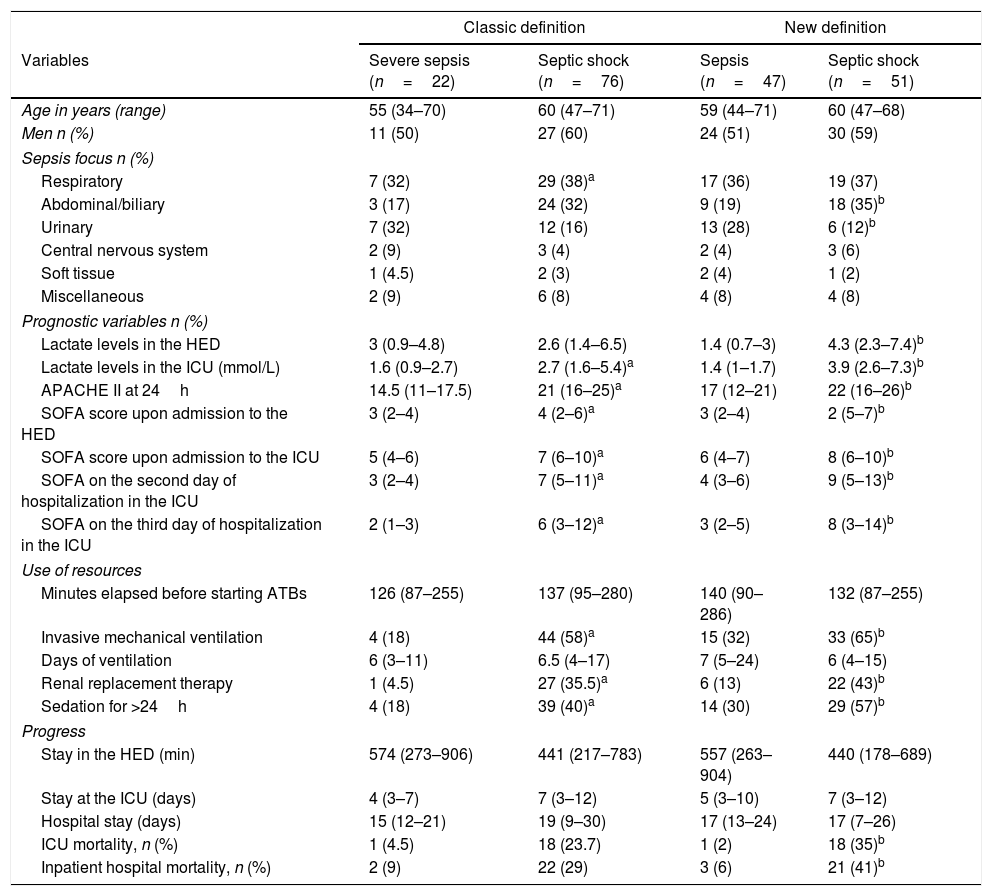After the publication of the new definition for sepsis and septic shock, our objective is to analyze the evolution of patients admitted to ICU with an infection process using the previous and new recommendations.
Materials and methodsThis is a sub-analysis of a previous observational prospective study. We included 98 patients admitted to ICU from the emergency department due to infection during an 18-month period. We studied the clinical evolution during ICU admission and hospital mortality.
ResultsAccording to Sepsis-2 definition, 78% percent had septic shock and using Sepsis-3 criteria, 52%; hospital mortality was 29 and 41%, respectively. The RR of hospital mortality of septic shock was 10.3 (95% CI: 2.8–37.5) compared to patients without shock. The 30-day probability survival of patients with sepsis and septic shock were 78% and 68%, respectively (long rank<0.001).
ConclusionsIn our experience, the incorporation of the SOFA score and lactate levels to the new definition could help improve the evaluation of risk of hospital death.
Tras la publicación de la nueva definición de sepsis y shock séptico, nuestro objetivo es analizar la evolución de los pacientes que ingresan en UCI por enfermedad infecciosa utilizando la definición clásica y los nuevos criterios.
Material y métodosSubanálisis de un estudio observacional y prospectivo. Incluye a 98 pacientes ingresados en UCI por enfermedad infecciosa desde Urgencias durante 18 meses. Se estudió la evolución clínica en UCI y la mortalidad hospitalaria.
ResultadosEl 78% de los pacientes tuvieron shock séptico con la definición Sepsis-2 y el 52% con los criterios Sepsis-3. La mortalidad hospitalaria fue del 29 y del 41%, respectivamente. El RR de mortalidad hospitalaria de los pacientes con shock séptico fue 10,3 (IC 95%: 2,8-37,5) respecto a los pacientes sin shock. La probabilidad de supervivencia a los 30 días de los pacientes con sepsis y shock séptico fue del 78 y 68%, respectivamente (long Rank < 0,001).
ConclusionesEn nuestra experiencia, la incorporación de la puntuación SOFA y el lactato a la nueva definición puede mejorar la valoración del riesgo de muerte hospitalaria.









